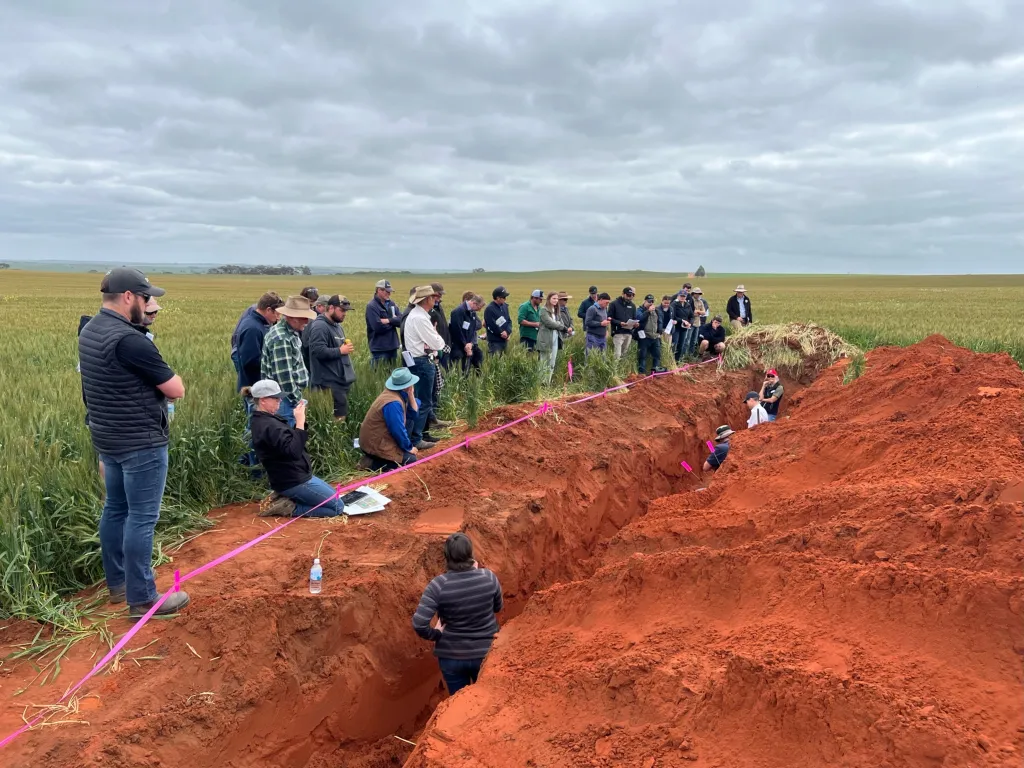Nitrogen source in wheat, Dandaragan
By Isaac Gilchrist, Summit Fertilizers Field Research Officer
Key Points
- This Summit trial investigated five nitrogen sources, including one of our EEF (Enhanced Efficiency Fertilizer) products.
- In-season biomass, harvest yield and protein results were consistent across all treatments, and therefore there were no significant differences between N sources.
- There was no significant financial advantage from using one N source over another, reinforcing the idea that on-farm logistics and requirements for other nutrients would be greater determinants of choice.
- Using the urease inhibitor-coated urea was no less profitable than using the standard urea under 2023 conditions and could be considered a good insurance policy.
Trial Aim
With many nitrogenous fertilizers available in the market, giving growers confidence when choosing or switching products is important – particularly with the recent market volatility and unavailability of some products. This trial is part of a series comparing some available nitrogen (N) products, all at one rate, to evaluate any differences and potential benefits, with this one being conducted in the Dandaragan area. A urease inhibitor product was also included in this trial to assess if there is any production advantages or disadvantages from the application of this product.
Trial Design
Calibre wheat, sown at 80 kg/ha, with all basal nutrients applied to meet the needs of the site. The red sandy loam site experienced just below average growing season rainfall (302mm – decile 4 season), with a dry finish.
The five N sources tested were Urea, Urea coated with urease inhibitor, UAN, UreaPlus (NS granule), and MAXamFLO (NS liquid).
In-Season Results
Emergence recorded at 3-leaf was consistent across all treatments and exceeded the target rate. Wheat shoot biomass assessments taken at mid-tillering and flag -1 showed no significant differences between N sources.
Harvest Results
Yields were very consistent across the treatments, with a range of 4.8t/ha to 4.9t/ha, and 12 to 12.7% protein, with all treatments graded as H2 (figure 1). There were no significant differences between N sources (p=0.78). Gross margins only had a range of $34/ha from the lowest to highest treatments.

Discussion
The trial results were not unexpected, given many years of research looking at N source. The majority of trials show that rate and timing are more influential on profitability than N source. On-farm logistics, along with the need for other nutrients such as S or K, tend to be the determining factors when deciding which N source is best for each situation.
The results from 2023 in Dandaragan show that there is no detriment to profitability by using a urease inhibitor-coated product. Using the inhibitor products may be a good insurance policy and will undoubtedly have a positive outcome in certain circumstances. Trials investigating EEFs will be ongoing by Summit Field Research.
More Information
This is a brief version of the trial report. Contact your Summit Area Manager for further details.

Summit Fertilizers have been a long term supporter of the West Midlands Group.













